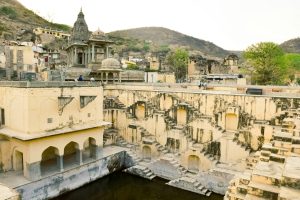The Future of Urban and Suburban Community Planning
The world is rapidly changing, and with it, the way we plan and design our communities is also evolving. The traditional urban and suburban community planning methods of the past are no longer sufficient to meet the needs and challenges of the present and future. As cities grow larger and denser, and suburban areas become more interconnected, it is essential to rethink and reimagine the way we plan and develop these spaces. In this article, we will explore the future of urban and suburban community planning and how it can shape the way we live and interact in our communities.
The Evolution of Urban and Suburban Community Planning
Urban and suburban community planning has come a long way since the Industrial Revolution, where cities were designed around factories and transportation hubs. The early forms of city planning were primarily focused on efficiency and economic growth, with little consideration for the social and environmental impact on communities.
However, as the negative consequences of such planning became apparent, urban planners began to shift their focus towards creating more livable and sustainable communities. This shift in mindset led to the introduction of concepts such as green spaces, mixed-use developments, and walkability in urban and suburban planning.
The Current State of Urban and Suburban Communities
Despite this progress, many urban and suburban areas still face numerous challenges. Rapid population growth and urbanization have resulted in increased traffic congestion, air pollution, and strain on infrastructure. In suburban areas, the demand for large, single family homes has led to urban sprawl, leading to an increase in commute times and car dependency.
Moreover, the COVID-19 pandemic has exposed the vulnerabilities of our communities, highlighting the need for more resilient and adaptable planning. As cities and suburbs continue to grow and change, it is crucial to consider how the future of community planning can address these challenges and create thriving and sustainable communities.
Technology and Smart Communities
One of the key factors shaping the future of urban and suburban community planning is technology. The emergence of smart technology has the potential to revolutionize the way we live and interact in our communities.
From self-driving cars to smart grids, technology can help improve the efficiency and sustainability of our communities. For instance, smart sensors can be installed in buildings and infrastructure to monitor energy usage, providing valuable data for planners to improve energy efficiency in buildings. Additionally, smart transportation systems can reduce traffic congestion and carbon emissions by optimizing traffic flow and offering alternative modes of transportation such as electric bikes and scooters.
Moreover, technology can also improve the quality of life in communities. For instance, smart lighting systems can provide better street lighting and improve safety, while smart waste management systems can reduce litter and improve waste management in cities and suburbs.
Revitalization of Urban and Suburban Spaces
The future of urban and suburban community planning also involves the revitalization and redevelopment of existing spaces. With the increasing need for affordable housing and the desire for more walkable and diverse neighborhoods, the focus is shifting towards creating vibrant and mixed-use developments.
Redevelopment projects can also help revitalize underutilized areas, reduce urban sprawl, and create more sustainable and livable communities. For example, converting outdated strip malls into mixed-use developments can provide housing, retail, and office spaces in one convenient location, reducing the need for travel and promoting a sense of community.
The Role of Community Engagement
Community engagement will continue to play a crucial role in the future of urban and suburban community planning. Including residents and stakeholders in the planning process can provide valuable insight and ensure that the needs and preferences of the community are considered.
Furthermore, community engagement can help create a sense of ownership and responsibility among residents, leading to more sustainable and livable communities. By involving community members in decision-making processes, planners can gain a better understanding of the community’s values and aspirations and create spaces that reflect these values.
The Importance of Sustainability
Sustainability is a critical consideration in the future of urban and suburban community planning. With the increasing risks of climate change, it is crucial to create communities that are resilient and can adapt to changing environmental conditions.
Efforts to make communities more sustainable include incorporating green spaces, designing buildings with energy-efficient materials and systems, and promoting alternative modes of transportation. Additionally, sustainable practices such as rainwater harvesting and green roofs can help reduce the strain on city infrastructure and improve the overall health and well-being of communities.
The Future of Urban and Suburban Community Planning is Bright
The future of urban and suburban community planning is exciting, as it offers the opportunity to create more sustainable, livable, and equitable communities. With the integration of technology, community engagement, and a focus on sustainability, we can develop thriving and resilient neighborhoods that meet the needs of present and future generations. As we continue to evolve and adapt to a rapidly changing world, urban and suburban community planning will continue to play a significant role in shaping the future of our communities.
In conclusion, the future of urban and suburban community planning is full of potential and possibilities. By embracing new technologies, involving the community in the planning process, and prioritizing sustainability, we can create communities that are not only aesthetically pleasing but also socially, environmentally, and economically sustainable. It is up to urban and suburban planners to take a proactive approach and create communities that can withstand the challenges of the future while providing a high quality of life for its residents.











